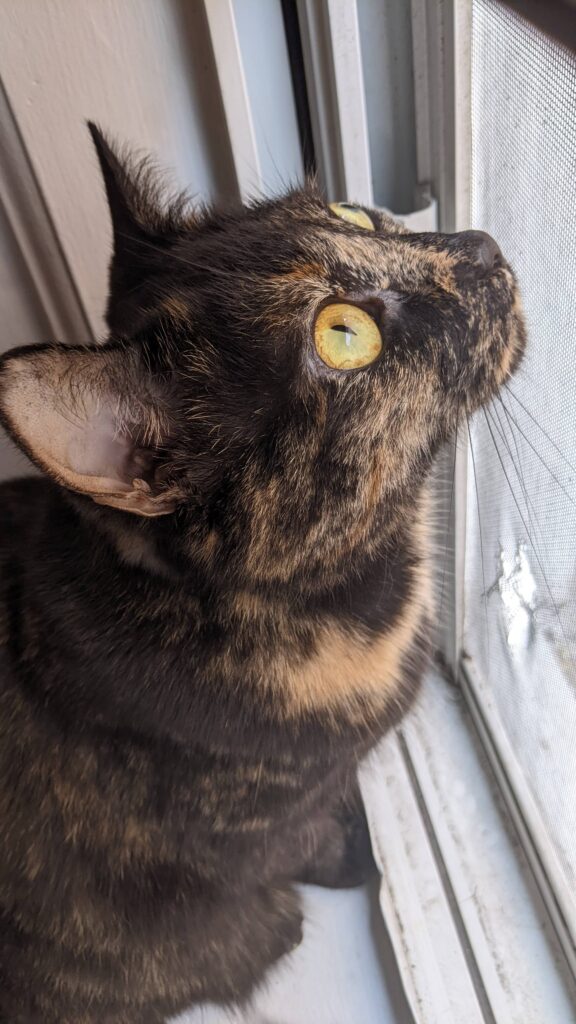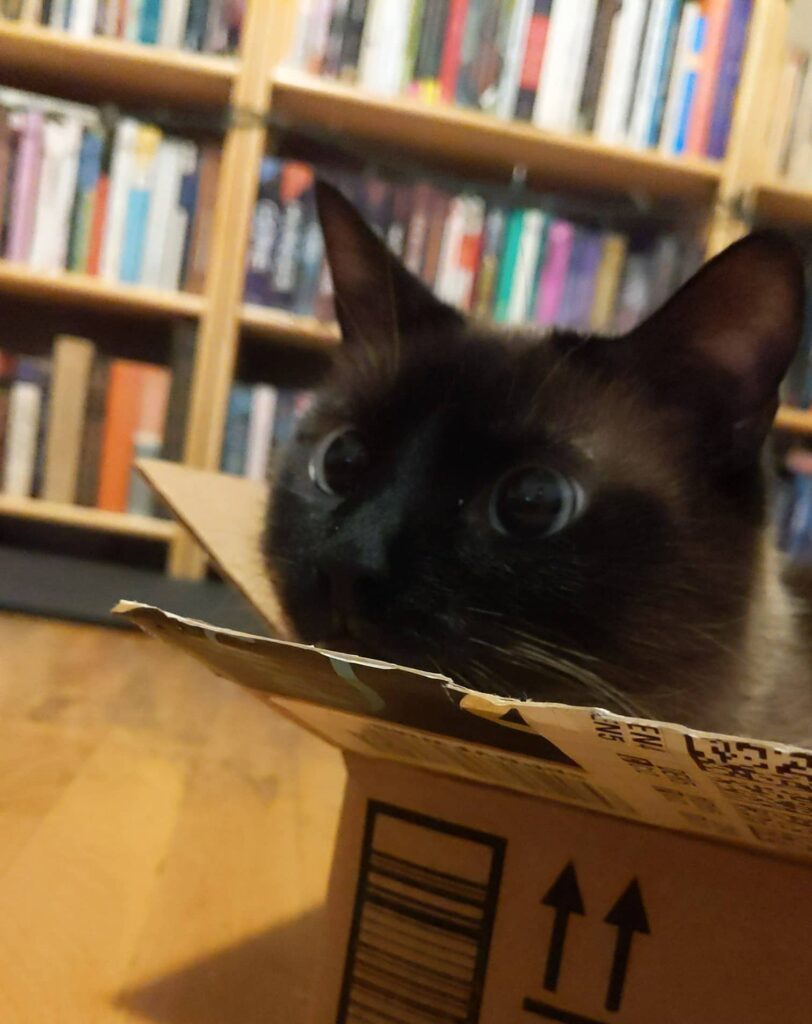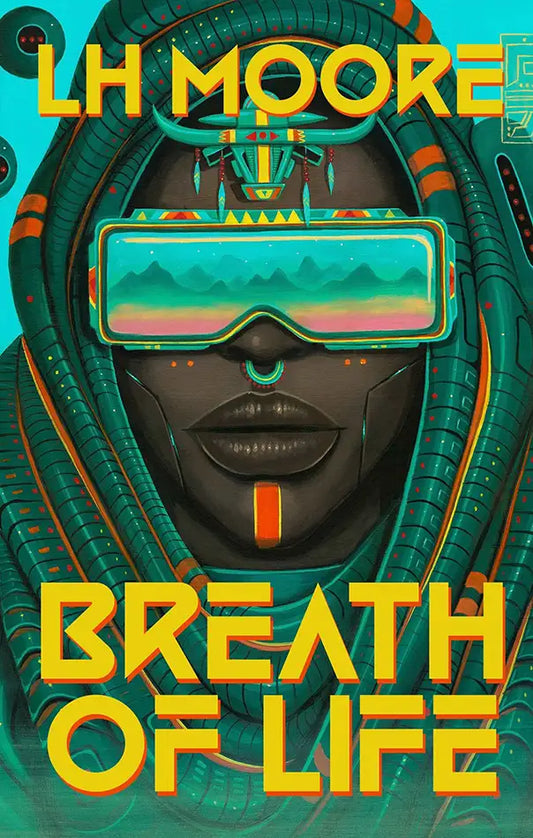
There are fairytales about love, of devotion that runs so deep that it can bring back someone from beyond the veil of death. This is not one of those. “Chị Tấm Is Tired of Being Dead” by Natasha King sets the reader up for a dark fairytale, and it delivers on that, but with a twist. It’s a beautiful story told with a righteous fury. It is about betrayal, and a scarcity of love. For every character in this story, there is never quite enough love, and they will go to great lengths to secure more of it. But most of all, it is a story about sisterhood, in all its facets: the nurturing, the jealousy, the betrayals, the competitiveness, and the deep connection that cannot be broken.
Natasha King is a Vietnamese American writer and nature enthusiast. Her work has appeared in Clarkesworld, Nightmare Magazine, Strange Horizons, and elsewhere. In her spare time, she enjoys thinking about the ocean. She can be found on Twitter as @pelagic_natasha.
Marissa van Uden: Thank you so much for joining us today! The very first lines of this gorgeous story drop the reader directly into a scene of twisted magic, with the contrasting the sweetness of fruit with the grotesque imagery of a woman being reformed from the inside out. Your writing finds this wonderful balance between beauty and horror, love and hate. Is that something you reach for consciously?
Natasha King: Thank you! It’s definitely something I strive for. Maybe it’s from writing poetry, but I love when imagery collides with itself in unexpected ways, whether it’s via jarring organic visuals or a juxtaposition of the natural world with supernatural or unnatural elements.
MVU: What other stories or other media is this piece in conversation with?
NK: The primary story this piece is in conversation with is, I think, the original fairytale (Tấm Cám), which I’ve loved since first reading it as a young child. I think about the implied shift in Tấm, a girl who seems to start out as kind, dutiful, and selfless, and who by the end of the story is boiling her sibling to death and tricking her stepmother into eating the remains. I’m fascinated by the internal changes that are left out of the explicit text of the story—the arc one might imagine happening inside Tấm, the toll of repeated betrayals and deaths driving a person to the point of retaliation and vengeance.
In the original story, Tấm persists through multiple deaths and remains happily married to the king. The exploration I set out to make was: what if she was just a little bit angrier, just a little bit more reckless? Toward whom would that anger be directed? What other choices would she make, if she wasn’t necessarily interested in a happy ending? I was much more interested in how she would feel about Cám, the character who actually interacts with her the most, than in how she would feel about a benign and somewhat oblivious husband figure.
MVU: I wasn’t aware of the Tấm Cám fairytale, so thank you for sharing about that. There is a moment in the story when Tấm realizes she is fighting not against her sister’s betrayal, but against her indifference. She just wants to be close to her sister again, whatever that takes. “You can win someone over to your side, as long as they care enough to be in the fight.” What inspired you to write about this theme? Do you have sisters or think about sisterhood a lot?
NK: By the end of the story, Tấm has realized she doesn’t care that her sister is trying to kill her, because she prefers it to being ignored. She would rather fight her sister indefinitely than not interact with her at all. It’s maybe not the healthiest state for a relationship, but the ending hopefully suggests they could move forward into something better—which is only possible because, as Tấm notes, her sister cares enough to stick around. The relationship theme I wanted to explore with this piece was the aspect of love deriving from attention to detail: paying attention to someone, making a place for them in your mind even when they aren’t around, spending the energy and effort to learn who they are, to know them deeply. This is contrasted with Tấm’s husband, who appears benevolent but who ultimately has not bothered to learn much about either sister.
While I don’t have sisters, I am an oldest sibling, so the honorific chị, meaning older sister, has always been meaningful to me. I think about the protectiveness that can be present in a sibling dynamic, as well as the competitiveness, and the moment of surprise when a sibling does something unexpected—the moments reminding you they’ve evolved into a full-fledged person. Tấm tells herself repeatedly that she has no kindness left, no love, nothing but the drive to get even with the people who hurt her. But in the end, she hasn’t truly lost the love and protectiveness she feels for her younger sibling—she still wants, more than revenge, more than anything, for the two of them to be on the same side.
 I write accompanied by Solstice, who came from a semi-abandoned lot and has not learned manners since, nor restraint.
I write accompanied by Solstice, who came from a semi-abandoned lot and has not learned manners since, nor restraint.
MVU: Could you tell us about how the story evolved, from the seed idea to final version? Did it go through many drafts, and were there any questions you had to ask yourself as it took shape?
NK: Like I mentioned, I am periodically mulling over the original fairytale, so this started with the question, what if Tấm was just slightly more impatient? What if she came out of the persimmon slightly early (in the original story, she waits until the old woman has left the house) and only got more impulsive from there? By the end of the opening scene, I knew the voice I wanted for Tấm and the arc of the rest of the story. It didn’t change significantly during revisions, but the biggest thematic question I had to work through was the internal shift Tấm needed to undergo to be ready to forgive her sister in the final conversation. As the title states, she’s tired of being dead; I had to figure out what else she was tired of by the end of the story.
MVU: I love that! What was your favorite scene to write, and why?
NK: Cám returning as a revenant to fight the guards, with Tấm then having an argument with her sister’s animated bones. Thematically, it was a satisfying conversation to construct between two people who had let their resentment build up to the breaking point. Stylistically, I love indulging in body horror and in words like “osseous.”
MVU: I’m so happy you chose that scene; it’s so horrifying and glorious. As a child, what dark fiction did you love,and how do those works influence your writing?
NK: Does Animorphs count as dark fiction? I still think about the Animorphs series at least once a week. As a child, I also loved The Underland Chronicles by Suzanne Collins, a series notable for not shying away from character deaths and for weaving serious, heavy themes together with unnerving biological concepts and settings. I think I’m still influenced by visceral imagery from these books and others, still chasing the perfect balance of lush yet alarming environmental details. Other examples I remember from childhood are The Illustrated Man by Ray Bradbury, and volumes upon volumes of fairytale books (I loved the Andrew Lang collections) that leaned a bit darker than the standard lineup of classics.
 I also write accompanied by Alabaster, who sleeps 16 hours a day and has done nothing wrong, ever, in his life.
I also write accompanied by Alabaster, who sleeps 16 hours a day and has done nothing wrong, ever, in his life.
MVU: I noticed that you enjoy playing with unusual perspectives and story structure in your short fiction. “Here All Week” is an immersive and entertaining horror that not only weaves in humor with the dark fiction but is built around elements of standup comedy; and the truly beautiful “Root Canticle” also adopts a quite unusual perspective to tell its story to an equally interesting audience (I’m trying not spoil anything here for readers). Just like with “Chị Tấm Is Tired of Being Dead,” these stories surprise and twist elements together in unexpected ways. What is it that excites you about writing stories that push on reader expectations, and do you search for these kinds of voices and structures from the start, or is that something that happens naturally as you write them?
NK: I had a great time writing both those pieces! In “Here All Week” the first element I solidified was the narrator’s voice, and similarly for “Root Canticle” the first and central pin of the story was the point of view. I usually prioritize decisions about voice and structure early on, but it doesn’t always happen naturally; sometimes it takes several revisions to get there. I definitely enjoy the writing process more if the voice feels vibrant and humorous, or when there’s a unique structural element to play with. Unusual structure and a resonant voice create more bones on which to layer the other elements of the story; the more compelling the bonework, the more attachment points there are for weaving in theme, character, worldbuilding, etc. I’m excited by stories that have an unexpected edge to them, or that are happening simultaneously across multiple layers.
MVU: I love this answer! Unusual structure and a resonant voice are clearly strong places to build a story from. You mention in your bio that you are a nature enthusiast, and your stories are filled with incredible nature-inspired details. Can you talk a little about how nature plays into your writing life and process? What does nature mean to you, and how do you pull this into your creative life?
NK: My parents instilled a strong appreciation for nature in me from childhood, and as I grew up I kept an interest in ecology and the natural sciences. I think I write better when I pay closer attention to things, and being out in nature always feels like an invitation to exercise that muscle. Trying to catch movement in the undergrowth, notice the quality of the light in the air, spot an animal camouflaged in the landscape. And I love writing about nature, the specificity of it all—the sensory details, the vocabulary of it, the evocation of place. I’ve always loved knowing the names of things.
MVU: Knowing the names of natural things really does feel like knowing magic spells sometimes. What does your daily routine look like? Do you have any beloved writing rituals or habits that help you sit down and write, or do you write on the go?
NK: I wish I had a writing routine! Maybe that’s something I’ll achieve soon. In the absence of a routine, my writing ritual is to trick myself into starting, because once I’ve started, I’m likely to keep going. For new drafts, I do love writing in notebooks, and in cafes and parks. Once it’s time to really crunch through a lot of words, typing is definitely preferable, but if I’m still feeling my way into a story, I find a blank page easier to work with than a blank screen.
MVU: Is there anything you’re especially excited to work on this year … any themes or ideas you really want to explore but haven’t yet?
NK: I’m excited to keep working, mostly. I’ve gone through periods of writer’s block before, and it’s made me really appreciate how delightful it is to start and finish pieces. This year I’m looking forward to exploring some ideas for climate change-related pieces.
MVU: I’m so looking forward to reading those! Thank you once again for sitting down to talk about your work. For readers who loved this story, where else can they find you, and do you have any recent or upcoming releases they should look out for?
NK: Thank you for the thoughtful questions! I had work published in Clarkesworld, Strange Horizons, and Nightmare Magazine last year, and if anyone is interested in poetry, I can also be found cropping up occasionally in various online poetry journals. I have at least one other speculative piece coming out this year which I hope anyone who loved this story will also enjoy; in the interim I can be found on Twitter @pelagic_natasha.








